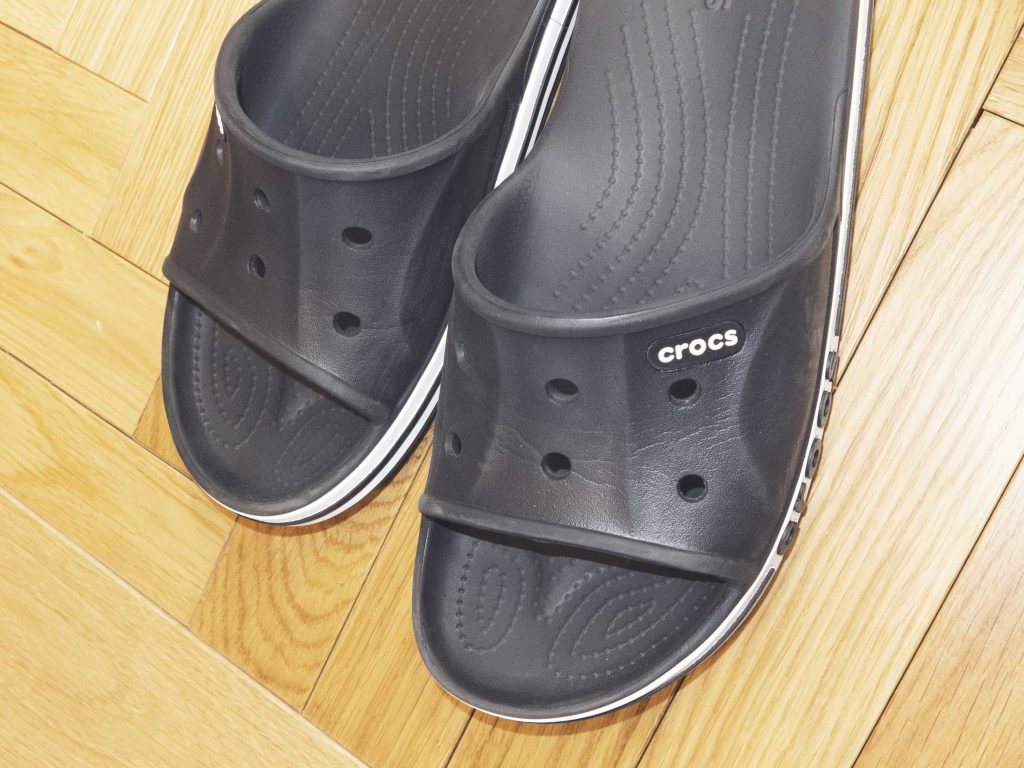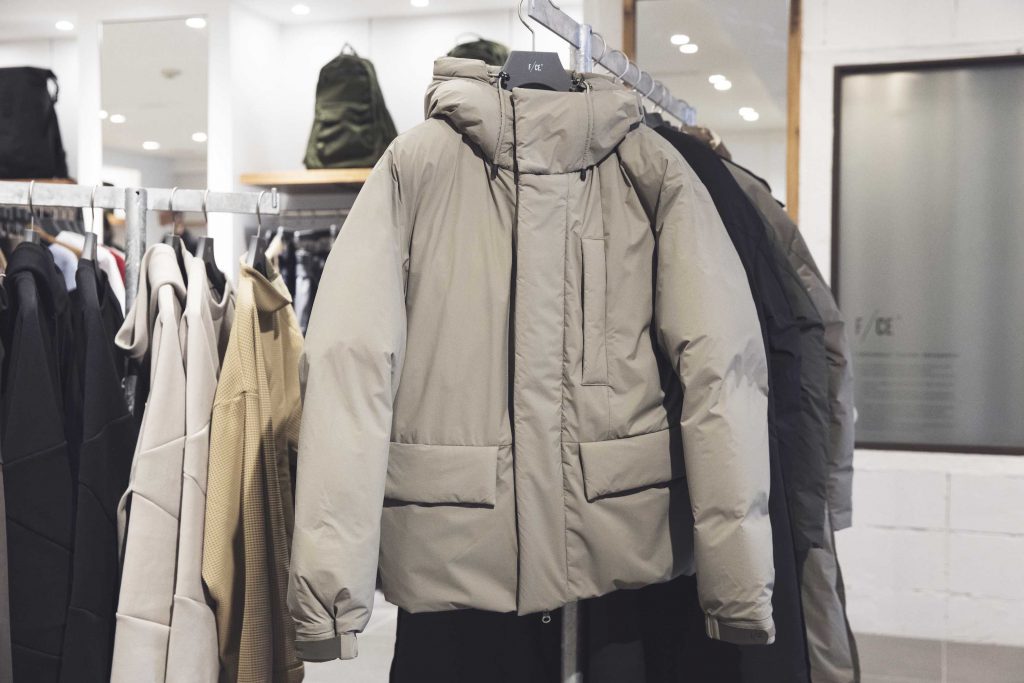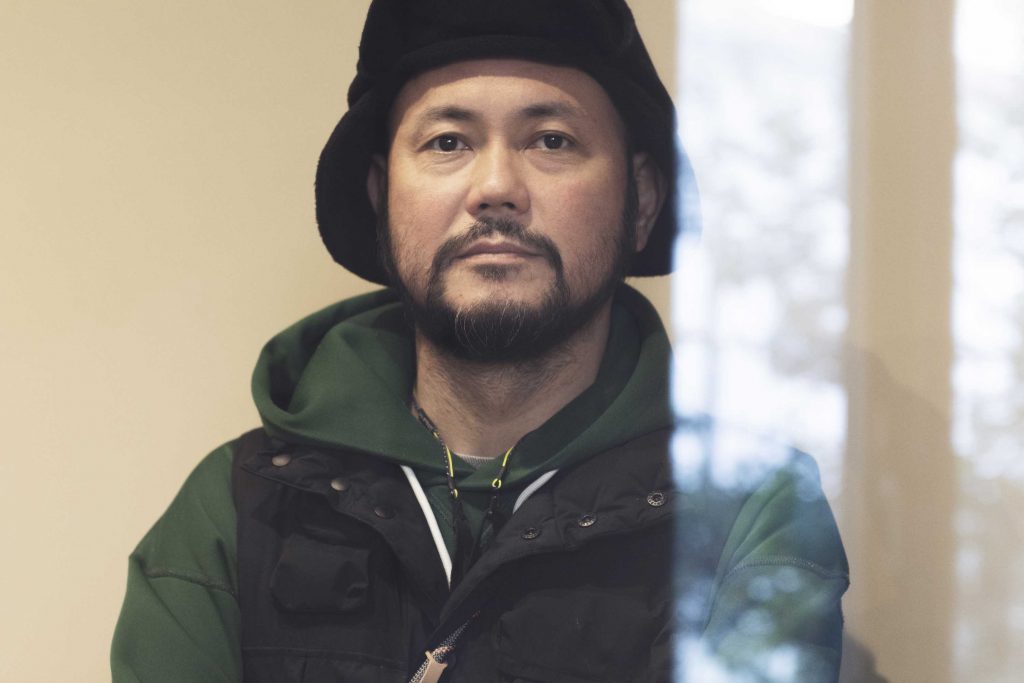Edit&Text by Yukihisa Takei(HONEYEE.COM)
Photo by Kiyotaka Hatanaka
Movie Directed by Ryoji Kamiyama
"Designing everything"
Fashion has always been attracted by the functionality of outdoor wear while outdoor brands have always been drawn to the design of fashion. F/CE.® is a Japanese brand that uses the initial "F" for fashion and function in its brand name and pursues the possibilities of both sides. For this interview, we caught up with F/CE.®'s designer, Satoshi Yamane, who founded the brand in 2010 and has since gained a strong following overseas.
Different attitudes as a designer and a musician

The career of Satoshi Yamane is a little different: he is the bass player in the popular instrumental band “toe", the designer and owner of F/CE.®, and he was also the one behind the success of the American sandal brand CROCS in its early days in Japan. The conversation started off with a talk about Yamane as a musician, which is essential to understand F/CE.®, and how he made CROCS a major player in the Japanese market in just a few years.
- You're playing the bass for "toe", but how did you get into music initially?
Satoshi Yamane (Y): I started playing in a band when I was 15. I'm from Nagoya, and there is a hardcore punk scene in Nagoya, and I started out in a hardcore punk band called “fragment”. Toe was formed in 2000. Yamazaki (Hirokazu) kun, who I had been playing with since the days in Nagoya, asked me to join. But I never thought it would be a band that would last for more than 20 years.

- Did you ever think of making a living as a musician?
Y: I didn't think about it at all. For me, I've been doing hardcore punk for a long time, so from that background, I was thinking that music is a place for strict self-expression, and although I make CDs and play gigs, it's not about making money from music and employing people. But because I'm so serious about what I do, if I don't perform well at a gig, I get so depressed that I can't even concentrate on my work (laughs).

- You sound very strict about music.
Y: Indeed. But I had to get a job to continue my passion for music.When I thought about it, I still wanted to do what I like, so I decided to go into fashion. Then I applied for a job at Men's Bigi at first, where I gained experience of making clothes as an assistant under Hisao Saito san of TUBE and Masahiko Sakata san of Archive & Style. During my 6 years there, I learned not just technical skills, but they also took me abroad and taught me a lot about fashion and culture from Europe and America.
An encounter with CROCS

- And how did you get involved with CROCS?
Y: After I had left my job as an assistant, I felt it was time for me to take on a new challenge, so I went freelance. Then Moridaira-san from Moridaira Musical, a guitar company that I had known for a long time and that deals with Morris, contacted me and said, “Yamane-kun, I found some amazing sandals, can you take a look?”. The sandals were called REBOUND, the former brand of CROCS.
- It’s interesting that it came out from your connections of music background.
Y: That's right. The brand was founded in Boulder, Colorado, in the US, and as soon as I saw them I thought they were really cool. Not only were they very light, but they also had a scientific basis in ergonomics that could improve your health by wearing them. I saw the potential, so we worked together to create a concept and a business plan that "we make these shoes to be worn by 120 million people in Japan".

- 120 million people is the population of Japan. What made you think you could go that far?
Y: It's not about cool or bad looking, there is scientific evidence, so I thought it's a product that can reach out to people.And the price is affordable too, only 3900 yen. I thought it could become a second or third shoe for people of all ages, something that could be used at the beach or on the balcony, something that could become an everyday item like a T-shirt. The HQ in the US was also focusing on the Japanese market as a cornerstone of the Asia-Pacific region, so I started CROCS JAPAN with Moridaira-san in 2004.
- CROCS was a massive hit.
Y: But nobody gave attention to them at first (laughs).So we bought a car, brought in one of my old friends to the company, and together with him we filled the car with about 500 pairs of CROCS and drove around Japan for about three months, gradually expanding the number of places that would carry them. From there, we started to receive more and more enquiries, and by the time we realized it, our annual sales were around 6 billion yen. After that, my achievements in Japan were highly evaluated, and I became the head of the new apparel and accessories business in the Asia Pacific, as well as the head of the design team, which meant that I had to look after 19 countries in Asia. I also studied English very hard, and that gave me the basis for F/CE.® to expand globally.
Fashion meets functionality

- And it was in 2010 that you eventually launched F/CE.®?
Y: I wasn't planning to stay at CROCS for so long from the beginning as I wanted to do my own brand, so I started under the name FICOUTRE. But because it's a coined word, people in English speaking countries can't pronounce it properly, so I changed the name to F/CE.® in 2016 and here we are.
- F/CE.® has become a very popular brand in Japan since the concept of fashion x outdoors was established. Did you have that in mind from the beginning?
Y: Yes, that's from the beginning. I don't really like trekking or mountain climbing because I find it too hard for me, but I've always loved camping. I've been fascinated by the idea of going to an inconvenient place to forget daily life and enjoy the time there, and I’m also addicted to collecting camping gear. I've also been really into outdoor clothing and the culture around it since the 1970s.
- What is it about 1970s outdoor clothing that makes it so special?
Y: The 1970s was the time of GORE-TEX® and the development of materials such as L.L.Bean's bean boots in GORE-TEX® and SIERRA DESIGNS' mountain parka in 60/40 cloth. It was also the time when the WHOLE EARTH CATALOG was published and Apple was founded in Silicon Valley, too.
- It's the age of tech culture.
Y: The idea of combining fashion and functionality was in my mind from the beginning, because I was all about music all the time, but this age made me realize that kind of fun. I wanted to express and add the essence of foreign culture that I got through my travels. That's why the "C" in F/CE.® stands for Culture and the "E" for Explorer.

- In Japan, there has always been a deeply-rooted tradition of wearing outdoor clothing in the city. For example, the word “heavy-duty" symbolizes this, but how do you see this style of Japanese people wearing clothes that come with more than enough functional details in the city?
Y: Japanese people have always been very good at mixing things up, for example, John Galliano trousers with Levi's®. It’s like mixing luxury brands, European casual, American casual and military. I think that comes from a unique Japanese culture of multi-label store, but it's very Japanese to be able to combine the outdoors with fashion, and I get a lot of inspiration from that by living in Tokyo.

The quality of down jackets and backpacks recognized even abroad

- What would you say is the most focused item in the F/CE.® range?
Y: Down jackets and bags have been our flagship items since the beginning. Both were items that I had never made before, but as soon as I started the brand I became strongly interested in them.
- F/CE.® has become well known for its jackets made in collaboration with the down brand Nanga.
Y: I've always been a camping enthusiast, so I used to use a sleeping bag from Nanga. A sleeping bag is the most important thing in winter camping, and Nanga's sleeping bags were very well made. When I started the brand, the second generation of Nanga, who is now the president, came to our showroom by chance, and we hit it off immediately. The following week, he already invited me to visit the factory. When I went there, I thought that I could make an amazing down jacket by using Nanga's down and quilt structure with my design, so I asked him for collaboration.

- What makes the difference in a down jacket?
Y: The quality and fill power of the down itself is one thing, but depending on the structure of the quilt, the same down can retain heat very differently. That's what I find interesting. When I make a down jacket, I of course design how it looks but, based on Nanga's down technology, I also design the inside in great detail. A few years ago, we also developed our own material for outer fabric which is most suitable for Nanga down. It's called F/LIGHT® and it's thin, waterproof, breathable, strong and naturally stretchy, which we think is the best material for down.

- It's quite rare for a designer to go as far as to develop a technical fabric.
Y: That's true. We spend a lot of time developing materials for our bags, too. We are still new to the Japanese bag industry compared with other established brands, so we thought it's not enough to use the same material. Then we emailed INVISTA, the American company that makes CORDURA®, saying that we would like to work together to create an original fabric, and they offered to co-develop it with the Japanese subsidiary.
- So, that bag was also made from the original fabric.
The bags are made with parts from a Korean manufacturer who also supplies the US military, zips are made by YKK in Japan, and the sewing is done by a factory in Vietnam that has worked with many famous outdoor brands. The shoulder harness is also made in a special structure based on the famous outdoor bag archives. We're trying to keep the price between 22,000 and 4,000 yen despite the cost of the materials and the labor.

Pursuing design and the best price

- Do you have a strong commitment to that price?
Y: Yes, we're very strict about the price, especially considering the global market, customs and duty will be a big issue, so we’re trying to keep the price affordable. I also look through all the second rate products and returns with the reasons, and I'm always looking for ways to improve them. It's not always obvious what's actually been changed so people don't really notice it (laughs).
- On the other hand, fashion is very much an added-value concept, isn't it?
Y: I think it's all about what you value and what you want to deliver after all. I guess even Yvon Chouinard, the founder of Patagonia, didn’t expect it to become such a big brand at first, but he kept thinking about what he wanted to deliver as value to people, and I think that's what made Patagonia what it is today. We're not quite there yet, but I always tell my staff that we want to deliver good products with our own design at the best price and that F/CE.® has no reason to exist unless we can deliver happiness to our customers. Luckily, I also design for four other brands, including the GURAMICCI performance line, but the feeling is the same when I do my work.
- What do you plan to do next?
Y: My career as a musician is still the same, but now F/CE.® has more than 40% sales overseas, and our goal is to increase that to 50% within the next few years. Having a base in Japan means that the price will inevitably be higher than we want, due to customs and duty and so on, therefore we are thinking of moving our overseas sales base to the UK shortly, once the current situation has eased, and moving our distribution base to the EU. Japan will remain our main base, but I feel I can design better products if I travel from place to place.

Satoshi Yamane
Fashion Designer
Born in 1975, Satoshi Yamane started playing in bands at the age of 15 and his career as a bassist began in fragment and DOVE. In 2000, he joined the band “toe”. After working as a designer for MEN'S BIGI since 1997, he joined the start-up of CROCS JAPAN in 2004. He has been the global product apparel line manager and the chief designer of the Asia Pacific creative team. Then he founded OPEN YOUR EYES KK. and launched FICOUTURE (now F/CE.®) in 2009, and won the Tokyo Fashion Award with his wife, designer Mami Yamane, for A/W 2018 season.
[Editor's note]
I met Yamane-san at the very beginning of FICOUTURE. I still remember I was impressed by his gentle manner even back then. Having talked to him again this time, I learned about his careful design process and the fact that F/CE.® is gaining popularity not only in Japan but also overseas. The reason behind this is their attitude to improve the quality of their products with a global perspective. (Takei)